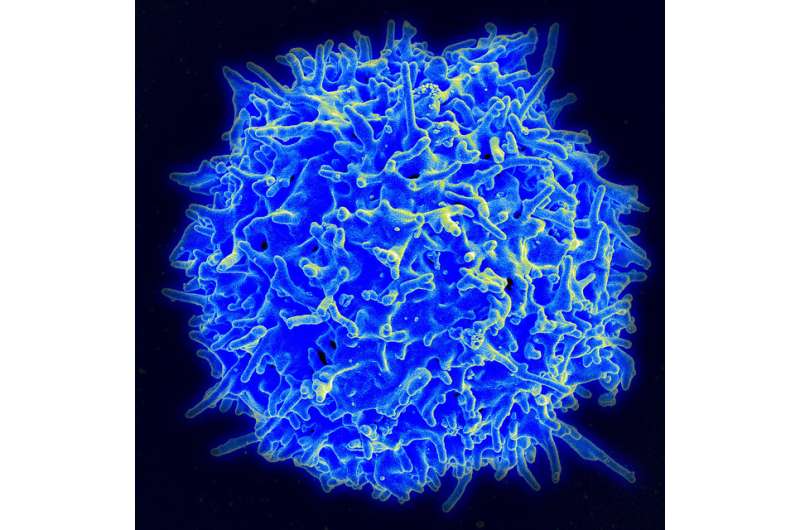Statistical analysis for optimal immunization: New insights into T cell development

When T cells encounter an antigen, they proliferate and produce various types of daughter cells. A team at the Technical University of Munich (TUM) has now refuted the prevailing hypothesis that this immune response is largely predetermined by the individual structure of the T cell receptor. Instead, the influence of the T cell receptor can be described only in probabilistic terms. Such mathematical models may help to improve the design of future vaccination strategies.
Our acquired immune system protects the body against such threats as viruses, bacteria and cancer. A special role is played by the T cells, each of which carries an individual receptor on its cell membrane. This T cell receptor can be seen as a highly specialized sensor. It fits to exactly one molecule, a so called antigen, located on the surface of a virus, for example. As the receptors are unique, there are small differences between any two receptors that recognize the same antigen.
When the T cell recognizes the corresponding antigen with its receptor, two things happen: It proliferates rapidly, and the previously "naive" T cell, which is incapable of fighting an infectious agent, differentiates into new cell types. These can be roughly categorized as either effector or memory cells. Effector cells secrete substances that mediate the actual immune response and disappear when the danger has passed. Memory cells, by contrast, persist in the body and ensure a very rapid immune response in case of a new infection with the same infectious agent. This effect is utilized in vaccinations.
Different patterns in individual cells
The number and type of cells produced from a single naive T cell varies. Why that is so, is disputed among researchers. According to one hypothesis, everything depends on the T cell receptor. Due to their individual structure, some T cell receptors fit better to an antigen and therefore form a stronger connection with it than others. This led to the conclusion that these differences in the strength of connection determine how a T cell and its daughter cells will develop.
"We were able to show that this explanation does not hold up if one studies how individual T cells respond to infections," says Dr. Veit Buchholz, head of a research group at the Institute for Medical Microbiology, Immunology and Hygiene at TUM , who is one of the principal authors of the study. The researchers investigated the development of individual T cells with identical T cell receptors that were exposed to the same antigen.
"The result was clear," says Buchholz. "Under the hypothesis that the quality of the connections is decisive, all of the results should have shown the same pattern. Instead the individual T cells generated widely varying numbers of the different cell types."
Groups of T cells demonstrate regular behavior
That does not mean, however, that the development of T cells is completely chaotic. When they studied groups of naive T cells instead of individual cells, the TUM scientists observed the expected patterns.
These seemingly contradictory results support the hypothesis of the researchers. "The results for individual T cells indeed show wide variations. However, the different patterns each occurred with a certain probability," says Prof. Dirk Busch, the director of the Institute for Medical Microbiology, who is also one of the principal authors of the paper. In cooperation with the biomathematical research group headed by Dr. Michael Floßdorf, the team used these probabilities to create a mathematical model. It shows that when the results of the single-cell experiments are combined, they match the results for groups of cells. The team applied a similar procedure in 2013 to another type of naive T cell.
Significance for immunization
If we already know the laws governing the development of a group of T cells, it would seem reasonable to ask why it is even necessary to study individual T cells. "T cell immune responses to infections and tumors sometimes emerge from very low numbers of cells," explains Dirk Busch. "To predict how these responses will unfold, it is important to understand how individual T cells behave."
In practice the insights gained by Buchholz, Busch and their team could help, for example, to improve vaccinations to which only a very small number of T cells in the body can respond," says Veit Buchholz: "The better we understand the probabilities with which protective memory cells are generated after a single vaccination, the more precisely we may be able to control that process through various sequential immunizations."
More information: Yi-Li Cho et al, TCR Signal Quality Modulates Fate Decisions of Single CD4 + T Cells in a Probabilistic Manner, Cell Reports (2017). DOI: 10.1016/j.celrep.2017.07.005




















